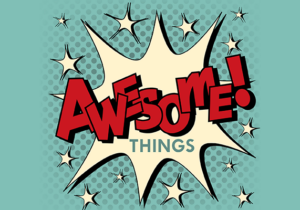Science’s Creativity Crisis: Learning to Innovate
“Are you as innovative as you want to be? Although eight of 10 respondents in a poll of thousands of workers from the United States, Europe, and Japan in 2012 said creativity was critical to unlocking global economic potential, only one in four felt they were fulfilling their own creative potential. Almost half complained that they don’t have the skills to be as imaginative as they could be.
“That’s no surprise. Few of us are systematically taught to innovate. As a result, we are hindered and made to feel vulnerable because leaders of major companies rank flexibility and creativity among the top characteristics they look for in employees.
“That’s not just a problem for us as individuals; it’s a problem for society. Who doesn’t marvel at the advances underlying our smartphones and computers? Yet we seem to be inadequate to confronting our greatest challenges. Lack of affordable clean energy and water has wrought climate extremes and endangered species. We’re plagued by Alzheimer’s disease, emerging infections, cancer, preterm birth, and obesity. We’re pretty good at micro-innovation, but we lack the vision, the ambition, and the strategy for the revolutionary innovation that these problems demand.
“I woke up to this truth some years ago. I’d spent my career as an academic scientist excelling within a time-honored formula: publishing and getting grants. But then a former boss told me that wasn’t enough. ‘You are doing everything right as an academic,” he said. “But you are not changing the direction of your field.”
 “I rejected that assessment at first but then came to realize that he was right. Only by taking risks and challenging norms can science leap forward. I started to write papers that countered conventional wisdom. For instance, one in 1996 suggested that the disease pre-eclampsia, a leading global killer of pregnant women, might represent accelerated cardiovascular disease. At the time, that idea seemed ridiculous; indeed, it was believed to have been disproven by the field’s greatest authorities. But it has since become part of the standard thinking.
“I rejected that assessment at first but then came to realize that he was right. Only by taking risks and challenging norms can science leap forward. I started to write papers that countered conventional wisdom. For instance, one in 1996 suggested that the disease pre-eclampsia, a leading global killer of pregnant women, might represent accelerated cardiovascular disease. At the time, that idea seemed ridiculous; indeed, it was believed to have been disproven by the field’s greatest authorities. But it has since become part of the standard thinking.
“Beginning to wonder where scientific innovation came from, I delved into the substantial literature on creativity. Over the past generation, experts have constructed training programs to educate students to think more creatively. That training has focused on children. That’s important, and good, but hey, what about adults? We would never expect an engineer to master technical calculations without having learned calculus, but we expect budding scientists to be on the forefront of innovation without giving them the necessary tools.
“Tools to promote innovation—generating powerful, constructive frames and metaphors; eliminating contextual bias; and so on—can be taught. But that’s only half the battle. The other half is a resource-starved, hidebound, risk-averse institutional culture that often discourages innovation.
“From one standpoint, that’s understandable. The large organizations that employ most scientists have to mind their bottom lines, traditions, and rules to survive. But can that culture of caution be reconciled with one of creation?
Read the rest of Dr. Roberta Ness’s essay at the Chronicle of Higher Ed.
Reviews of her book: Innovation Generation: How to Produce Creative and Useful Scientific Ideas






1 Comment
Multiple books on skills for innovation and creativity in science by Dr. Roberta Ness at: http://bit.ly/2lR5q36